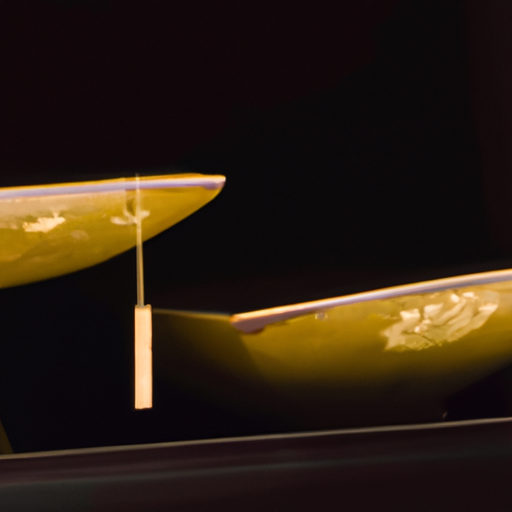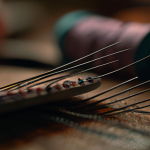The Influence of Ming Dynasty Medicine on Traditional Chinese Medicine (TCM)
The Ming Dynasty, which lasted from 1368 to 1644, was a period of great cultural and scientific advancement in China. During this time, traditional Chinese medicine (TCM) flourished and reached new heights. The influence of Ming Dynasty medicine on TCM cannot be overstated, as it laid the foundation for many of the practices and principles that are still used today.
One of the key contributions of Ming Dynasty medicine to TCM was the compilation of the Compendium of Materia Medica, also known as Bencao Gangmu. This monumental work, written by Li Shizhen, is considered one of the most comprehensive and authoritative texts on herbal medicine in Chinese history. It contains detailed descriptions of over 1,800 medicinal substances, including plants, animals, and minerals, along with their properties and uses. The Compendium of Materia Medica became a cornerstone of TCM and is still widely studied and referenced by practitioners today.
In addition to the Compendium of Materia Medica, Ming Dynasty medicine also made significant advancements in acupuncture. Acupuncture, the practice of inserting thin needles into specific points on the body to stimulate healing, has been a fundamental aspect of TCM for centuries. During the Ming Dynasty, acupuncture techniques were refined and standardized, leading to the development of the meridian system. This system maps out the pathways through which vital energy, or qi, flows in the body. By manipulating the flow of qi through acupuncture, practitioners can restore balance and promote healing.
Another important aspect of Ming Dynasty medicine was the emphasis on preventive care and lifestyle interventions. Physicians during this time recognized the importance of maintaining good health through proper diet, exercise, and stress management. They believed that by taking a proactive approach to health, individuals could prevent illness before it even occurred. This holistic approach to healthcare is still a core principle of TCM today, with practitioners often prescribing dietary changes, herbal remedies, and exercises like tai chi or qigong to promote overall well-being.
The Ming Dynasty also saw the rise of medical schools and the professionalization of TCM. Prior to this period, medical knowledge was primarily passed down through apprenticeships and family traditions. However, during the Ming Dynasty, medical education became more formalized, with the establishment of medical schools and the introduction of licensing exams. This helped to standardize the practice of TCM and ensure that practitioners were well-trained and knowledgeable.
The influence of Ming Dynasty medicine on TCM is undeniable. Its contributions in the areas of herbal medicine, acupuncture, preventive care, and professionalization have shaped the practice of TCM for centuries. Today, TCM continues to evolve and adapt to modern times, but its historical roots in Ming Dynasty medicine remain strong.
In conclusion, the Ming Dynasty was a golden age for traditional Chinese medicine. The Compendium of Materia Medica, advancements in acupuncture, the emphasis on preventive care, and the professionalization of TCM all contributed to its flourishing during this time. The legacy of Ming Dynasty medicine lives on in the principles and practices of TCM today, making it a truly remarkable period in the history of Chinese medicine.
Key Characteristics and Practices of Ming Dynasty Medicine

The Ming Dynasty, which spanned from 1368 to 1644, was a period of great cultural and scientific advancement in China. During this time, Traditional Chinese Medicine (TCM) flourished and reached new heights. The Ming Dynasty was characterized by its emphasis on holistic healing and the integration of various medical practices. In this article, we will explore the key characteristics and practices of Ming Dynasty Medicine, shedding light on the historical significance of TCM.
One of the key characteristics of Ming Dynasty Medicine was its focus on the balance between Yin and Yang energies within the body. According to TCM principles, the body is a microcosm of the universe, and maintaining the harmony of Yin and Yang is essential for good health. Ming Dynasty physicians believed that illness was caused by an imbalance of these energies, and their treatments aimed to restore equilibrium. This holistic approach to healing set the foundation for TCM practices that are still widely used today.
Another notable aspect of Ming Dynasty Medicine was the integration of various medical traditions. During this period, Chinese physicians were exposed to a wide range of medical knowledge from different cultures, including Indian, Persian, and Arabic. They eagerly embraced these new ideas and incorporated them into their own practices. This cross-cultural exchange enriched TCM and contributed to its development as a comprehensive system of medicine.
Herbal medicine played a crucial role in Ming Dynasty Medicine. Chinese physicians meticulously studied the properties of various herbs and their effects on the body. They compiled extensive pharmacopoeias, which listed hundreds of medicinal plants and their uses. These herbal remedies were prescribed based on the individual’s specific symptoms and constitution. Ming Dynasty physicians believed that by using the right combination of herbs, they could restore the body’s natural balance and promote healing.
Acupuncture, another cornerstone of TCM, also thrived during the Ming Dynasty. Acupuncture involves the insertion of thin needles into specific points on the body to stimulate energy flow and restore balance. Ming Dynasty physicians refined the practice of acupuncture, developing new techniques and expanding the understanding of meridians, the energy pathways in the body. Acupuncture became a widely accepted and effective treatment for a variety of ailments, ranging from pain relief to mental health disorders.
In addition to herbal medicine and acupuncture, Ming Dynasty Medicine also emphasized the importance of lifestyle and diet in maintaining good health. Physicians advised their patients on proper nutrition, exercise, and stress management. They believed that a balanced lifestyle was essential for preventing illness and promoting longevity. This holistic approach to healthcare was revolutionary for its time and continues to be a fundamental principle of TCM today.
The Ming Dynasty was a golden age for Traditional Chinese Medicine. Its emphasis on holistic healing, integration of different medical traditions, and focus on herbal medicine, acupuncture, and lifestyle factors set the stage for the development of TCM as we know it today. The Ming Dynasty physicians’ dedication to understanding the body’s natural balance and their commitment to individualized treatments laid the groundwork for the flourishing of TCM throughout history. As we continue to explore the wonders of TCM, we can look back at the Ming Dynasty as a pivotal period that shaped the course of traditional medicine.
Contributions of Ming Dynasty Physicians to TCM Development
The Ming Dynasty, which lasted from 1368 to 1644, was a period of great cultural and scientific advancement in China. During this time, many important contributions were made to Traditional Chinese Medicine (TCM) by Ming Dynasty physicians. These contributions not only helped to shape the development of TCM, but also laid the foundation for the practice of medicine that is still followed today.
One of the most significant contributions of Ming Dynasty physicians to TCM was the compilation of medical texts. These texts, such as the “Compendium of Materia Medica” written by Li Shizhen, provided a comprehensive overview of medicinal substances and their uses. This allowed for a more systematic approach to the study and practice of medicine, and greatly expanded the knowledge base of TCM.
In addition to compiling medical texts, Ming Dynasty physicians also made important discoveries in the field of acupuncture. Acupuncture, which involves the insertion of thin needles into specific points on the body, has been used in China for thousands of years to treat a wide range of ailments. During the Ming Dynasty, physicians such as Xu Dachun and Yang Jizhou further refined the practice of acupuncture, developing new techniques and theories that are still used today.
Another area in which Ming Dynasty physicians made significant contributions to TCM was in the development of herbal medicine. Herbal medicine has long been a cornerstone of TCM, with different herbs being used to treat different conditions. Ming Dynasty physicians, such as Li Shizhen and Zhang Jiebin, conducted extensive research on medicinal plants and their properties, identifying new herbs and refining existing formulas. This not only expanded the range of treatments available, but also improved the effectiveness of herbal medicine.
In addition to their contributions to medical knowledge, Ming Dynasty physicians also played a role in the development of medical education. During this time, medical schools were established, and a standardized curriculum was developed. This allowed for the training of a new generation of physicians, who could then go on to further advance the field of TCM. The establishment of medical schools also helped to ensure that the knowledge and techniques developed by Ming Dynasty physicians would be passed down to future generations.
Overall, the contributions of Ming Dynasty physicians to the development of TCM were immense. Through their research, discoveries, and teachings, they helped to shape the practice of medicine in China and laid the foundation for the TCM that is still practiced today. Their work not only expanded the knowledge base of TCM, but also improved the effectiveness of treatments and helped to establish a standardized approach to medical education. As we continue to study and practice TCM, it is important to remember and appreciate the historical flourish of the Ming Dynasty and the contributions of its physicians.


